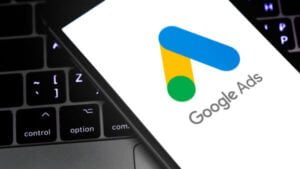
If you’re not getting enough organic traffic to your industrial website, it may be time to invest in pay-per-click (PPC) advertising, an effective online marketing strategy for manufacturers.
Pay-per-click advertising is considered “buying your way to the top” of search engines. It is effectively an auction for key phrases. The higher the bid and the higher the quality of your ads and landing pages, the higher your ad appears. Nothing is charged until the ad is “clicked through” to a landing page or website.
There are three choices of paid ads:
1. Text ads on the top and bottom of Google, Yahoo and Bing
2. Display, or visual, ads shown on participating websites
3. Visual remarketing ads that “follow” your website visitors and are shown on participating websites
Text ads create more conversions, while display ads create some conversions but are primarily an awareness or branding tactic.
The two big players in the search market are Google, and Bing/Yahoo. For best results, campaigns should be run on both search engines. Bids for targeted key phrases are dynamic and should be monitored regularly.
For industrial manufacturers, pay-per-click advertising can help their site rank at the top of Google’s search page and lower cost per lead.
Here are five main focal points for successful PPC advertising campaigns for manufacturers:
1. Keyword / Key Phrase Relevance
The first step to successful PPC advertising is keyword or key phrase research. Start by brainstorming a tight group of keywords and phrases that will resonate with customers and be useful when searching for your industry. Key phrases should be targeted, concise and specific. Be sure to think of how customers would search for your business and include those words and phrases in the campaign. Paid search is a good supplement to organic SEO for hard-to-rank key phrases.
2. Text Ad Content
Grab visitors’ attention with persuasive ad copy before they click on the competitors’ ads. Ad copy should personally relate to customers, spur them into action and be consistent. Include the most important information in the most concise way in order to provide clarity quickly. Well-written, compelling ad content differentiates and compels.
3. Landing Page Quality
Landing pages improve conversion rates. They specifically relate to the ad the prospect just clicked through to “land” on it. Implement a clear call to action to ensure that you’re directing visitors to conversion (phone call, online sale, contact form inquiry, etc.).
4. Create a “Sales Path”
Your website content and the products you advertise via pay-per-click should resonate with the audience and be consistent with the text and/or display ads. Make it easy for the prospect to purchase or take advantage of the offer. The “sales path” is a logical progression from seeing a pay-per-click ad, clicking on it, landing on the website and converting to a sales lead.
Want to improve the quality of your website? Read these Top 7 Signs Your Website Needs a Redesign.
5. Measure and Modify
Both Google Adwords and Google Analytics offer measurement tools that allow you to analyze key metrics such as ad impressions, clicks, cost-per-click, average keyword position, and ad click-thru rates. Armed with marketing intelligence, these campaigns should be regularly refined and optimized for greater efficiency.
With relevant keywords, persuasive ad copy and targeted landing pages, you’ll see the difference that PPC advertising can have on your industrial manufacturing company’s bottom line. Pay-per-click can be turned “off” or “on” at a moment’s notice. It’s a great strategy to use to boost sales during traditional down times in the calendar year.
If you’re ready to act on this low-risk, high-reward tactic, contact Gotham’s Google-certified specialists to quote pay-per-click advertising and let us do the heavy lifting while you watch your business grow.
